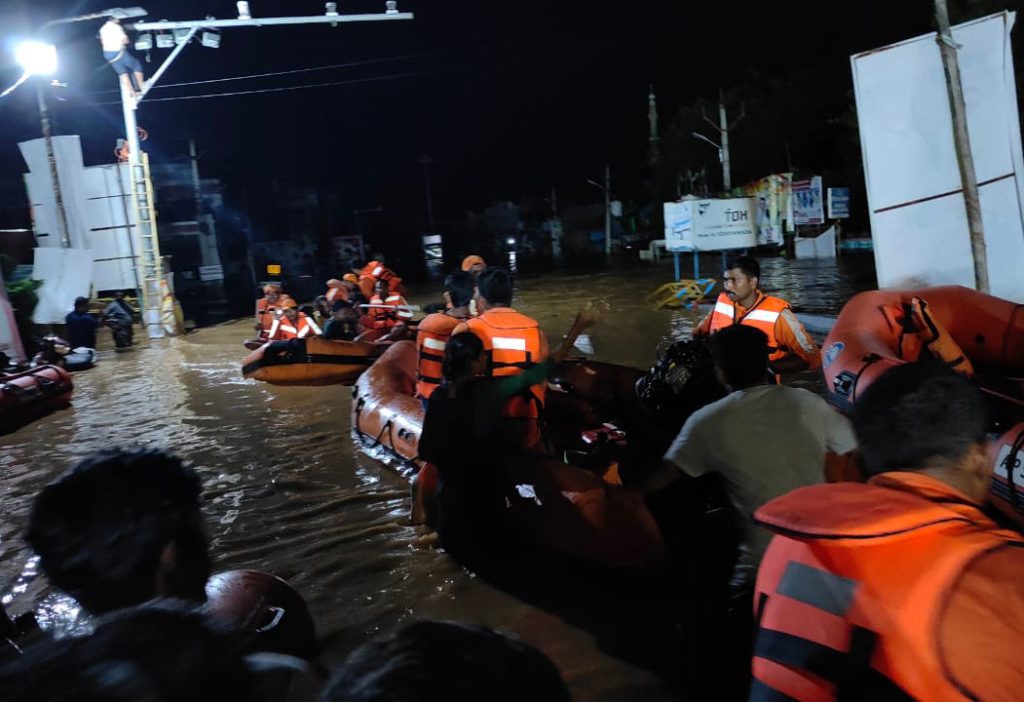The city of Vijayawada, nestled along the banks of the Krishna River in Andhra Pradesh, is grappling with severe flooding, marking one of the most significant flood events in its recent history.
What led to the situation?

Heavy Rainfall
The primary trigger for the floods was an intense spell of rainfall influenced by a depression over the Bay of Bengal. This weather system led to widespread heavy to extremely heavy rainfall across Andhra Pradesh, with Vijayawada receiving an unprecedented amount of water.
The Krishna River, which usually acts as a lifeline for the city, turned into a torrent, with water levels reaching historical highs, surpassing even the records of 2009.
Budameru’s Overflow
The Budameru, a rivulet that flows through Vijayawada, played a critical role in exacerbating the flood situation. Known locally as the ‘Sorrow of Vijayawada,’ Budameru saw an inflow of over 60,000 cusecs, far exceeding its capacity due to the heavy rains.
This led to overflows not just from its natural course but also from the diversion canal, which was designed with insufficient capacity for such extreme events.
Urban Encroachment
Over the past two decades, Vijayawada has undergone rapid urban expansion. Areas once part of Budameru’s natural floodplain have been encroached upon for housing and commercial developments. This encroachment has severely restricted the natural flow paths of floodwaters, leading to waterlogging and increased flood risk.
Inadequate Infrastructure
The infrastructure designed to manage floodwaters, like the Polavaram right canal, was found lacking. Despite warnings and historical precedents, modifications to increase the canal’s capacity were not implemented, leaving the city vulnerable.
The abrupt cessation of Operation Kolleru, aimed at flood control, further compounded the issue by not providing alternative flood management solutions.